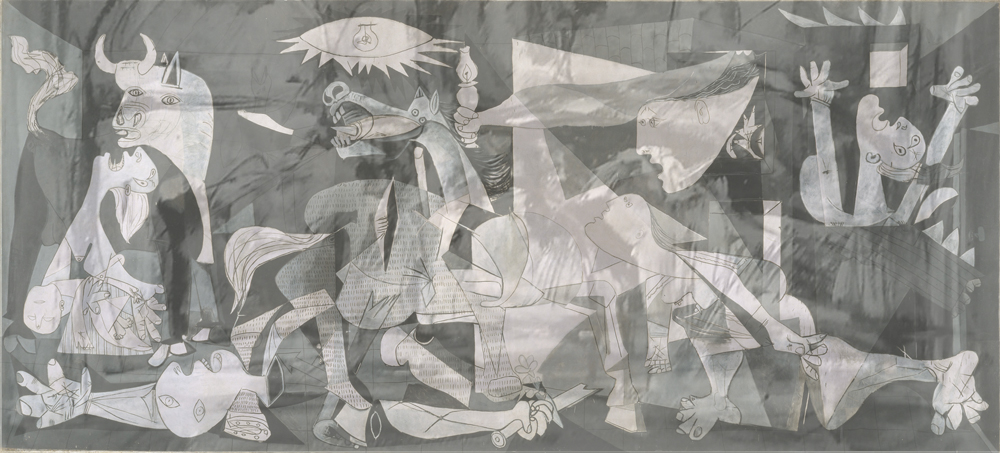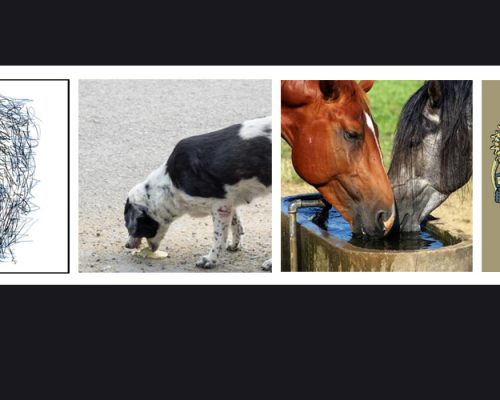One man’s violence is another man’s peace.
One man’s peace is another man’s violence.
History is often written by the victorious.
The sufferings and violences (of all sorts) toward the weak may remain unwritten.
The Bible as a collection of writings, contains elements of both written human past and written human future; it contains stories of violences and stories of peace.
When writing about Violence I like to use the word violences, plural – as violence is not always physical and not always visible – existing in so many forms of both micro-and-macro violences.
The Bible (as we know it) tells from the beginning to end, the story of two kingdoms and the movement from peace to violence and then, ultimately, back to peace.
We live in a terribly messy world where things of these two kingdoms are in constant clash in a number of ways from the minutely personal, daily struggles with allegiances and violences of all sorts, to the grand scale event we call War.
Nothing epitomizes these struggles with allegiances and violences than does War.
__________
For War to exist, some person or some entity or people, collectively, must first buy-in to the idea of War.
There are wars of all sorts being fought around us, daily.
From the culture wars to the socioeconomic wars to the biomedical wars to the political wars, we are often caught up in all the conflicting narratives that set the stages for the buy-in to such war(s) or War(s) and the accompanying violences.
Nothing is more confusing, violent or dangerous than propaganda(s) messaged from the powerful, “this is for your own good” and the creation of a common enemy that a people group must rally together against – the “other.”
From Pax Romana to Manifest Destiny to “fill in the blank” – there seems to be confusion and unclarity surrounding War and Peace.
I am certainly not equipped to discuss the nitty gritty’s of the period of “Roman Peace,” but I do recall hearing a talk awhile back about violence not ultimately ending violence, and this period of apparent peace being a somewhat momentary period kept in check by various violences that I’m assuming existed before, during and after this historical time period and were inter-related.
As in most things, this period reflects the messiness of it all – both the good and the bad aspects co-existing.
__________
Recently I was reading something that brought to mind two famous art paintings which visually reflect in some part these coexisting two kingdoms.
The paintings are Guernica, by Pablo Picasso and The Peaceable Kingdom, by Edward Hicks.
What I recalled from The Peaceable Kingdom was the part on the right with the lion, lamb and animals and children in harmony. This representation seems to draw upon the Scripture references in Isaiah 65:25 and Isaiah 11:6-7. I actually briefly read over general metaphor and typology of the “Lion and the Lamb” as even in my own mind, though I clearly know it is a symbol of God’s Peace and the Kingdom of God, the various Scripture references were not remembered precisely nor accurately, showing the complexity and seeming evolution of this metaphor.
What I didn’t recall from art history regarding the Edward Hicks’ portrayal, perhaps from biases I may have held when I first saw the painting, is the left part with colonizers and indigenous peoples “peaceably” together. This seems a pretty clear message of the theology of Manifest Destiny, but that is not a topic to meander into in this writing.
The above paragraph in RED was written initially in my draft, and as I was editing and further revising this piece I made an interesting discovery. Perhaps the reason I may not have initially recalled the image(s) of The Peaceable Kingdom specifically was because I primarily remembered only the title and the general content from art history, years ago. What I did not recall but surely would have been mentioned in a class was that there were 62 of these images Edward Hicks painted and they differ, showing evolving expressions as he grappled with these ideas.
I was alerted to this when I was again searching and came up with this article on The Metropolitan Museum of Art site showing a completely different image. At first I was confused, and upon further reading came upon this piece, telling the story of Edward Hicks, and reminding me that he was a Quaker minister and folk painter from the state in which I now reside in an area I am familiar with.
All of these finer, specific details were somewhat lost to me in my recollections, which in-and-of-itself shows how we humans mentally process information and images and what we recall, based on personal factors.
I primarily recalled the title (words), and the idea (concept/metaphor) and a partial, folk-art image in my mind’s eye (visual).
__________
Art, music and words (as well as photographs and other media) have great power and ability to create mental images that affect our allegiances and belief systems. If a certain image is put before us enough times – some symbol of something that the powerful want for others to have a buy-in (this can be visually, or words, or repeated ideas) – we will find ourselves, our thinking, our allegiences and even basic facts coming into question and battles of many sorts.
These images may range from nationalistic flags to any other symbol and may be used both appropriately and inappropriately. If a people is primed long enough with any repeated visual image or verbal mantra, many will eventually find the previous belief systems in some process of alteration.
I think back to the time period surrounding 9/11…still that one image of the burning towers as well as the image of Saadam’s statute being toppled stick in my mind…even though retrospective facts and history continue to bring to light a number of issues. Personally, I must question why we as a people think it is OK to adopt a mantra of “never forget.” If this is true, what about the peoples who experienced the Trail of Tears? Is it equally OK for us to hear this people group say “never forget?“
Both of these events were acts of intentional violence in the history of mankind, and show the disparity of our biases, allegiances and written record(s) of facts and events, further creating the fog in which we all dwell, to some extent.
__________
The left of this one version of the painting, The Peaceable Kingdom (shown below), departs from the ideals found in Scripture of peace between the powerful lion and the powerless lamb in the now-existing and ever-increasing kingdom of God, inaugurated by the Messiah, The Christ. In my brief refresher readings, I realized that the eventual main metaphoric symbol of the Lion and the Lamb actually reflects Jesus, in both. Revelation 5:5-6
I realize that all sources may contain elements of which we might think otherwise or understand differently, but the two links above, at least at first blush, seem to be traditionally on par with commonly held understandings of this most powerful Christian image of the Lion and the Lamb and the Two Kingdoms.
__________
My initial idea as I was in some recent readings on the topic of the biblical two kingdoms, was what if I took these two paintings and superimposed them upon one another at 50% opacity of each layer in Photoshop?
What kind of visual conflict and mess would it produce and what visual message might it send to remind us of this unclear fog we now live in?
I went on to search for a few more images of the lion and lamb together, more closely noting the ways the artist chose to portray this powerful symbol of the Kingdom of God.
The remainder of this piece is simply going to be a series of images with some brief comments between each one.


(Above) One of Edward Hicks’ sixty-two versions of The Peaceable Kingdom – the one I first saw in a Google search.

(Above) Guernica by Picasso in 50% opacity and the top layer…over The Peaceable Kingdom by Hicks at 50% opacity and the underlying layer.

(Above) The two reversed: The Peaceable Kingdom by Hicks at 50% opacity and being the top layer superimposed over Guernica by Picasso in 50% opacity and being the underlying layer.
__________
Next, a series of other representations of the Lion and the Lamb with interspersed comments. It would involve much additional time for me to go back and link/reference the artist/source of these…but for those interested one could simply search “lamb and lion art images” and easily locate these at the top of such search.

(Above) I am drawn to this image with its stylized simplicity and allusions to the Garden and to both nature and civilization (the tapestry backdrop) incorporated into the image.

(Above) I am somewhat drawn to this image conceptually – it is “Sunday-School-Like” and attempts inclusivity of various peoples and even has a black sheep (outcast) rather than the tradition symbol of a white lamb. Any representation of Jesus and/or his ethnos/appearance in art can be tricky. I’m OK with this image…but am now noticing the giraffes running with the children and the standing elements in the background! One might find some slight offbeat humor in this, but I think it works well for a conceptual image especially for children.

(Above) There is a lot I like about this portrayal – the nature setting and the interesting, colorful sky – it is likely a sunset but at the same time, the Lion’s upward illuminating gaze allude to a new Day…and I like the tender image of the lamb’s head resting on a huge paw.

(Above) I found this image when I changed my search to “lion and lamb abstract art” – as I thought perhaps the superimposed image should match, stylistically, Picasso’s Guernica. At first I could only see a lamb in this, but I think now I’m seeing an impression of a lamb with a lion’s face. This makes this an interesting piece, theologically.

(Above) This image interested me since both the lion and the lamb are in peaceful slumber, together.

(Above) This loose, simple watercolor is appealing to me.

(Above) This representation with abstract qualities has an appeal to me, also.

(Above) The design element of this representation is striking – the lamb is tucked within the sweep of the lion’s mane.
__________
My final section of this piece will be a creation of a series of the abstract “Lion and Lamb” art shown above (grayscale to match the second image) superimposed as the top layer but in various opacities of each, hopefully showing a visual advancement of The Kingdom of Peace over The Kingdom of Violence.










Thank You For Reading
Please Feel Free To Express Your Thoughts Below




